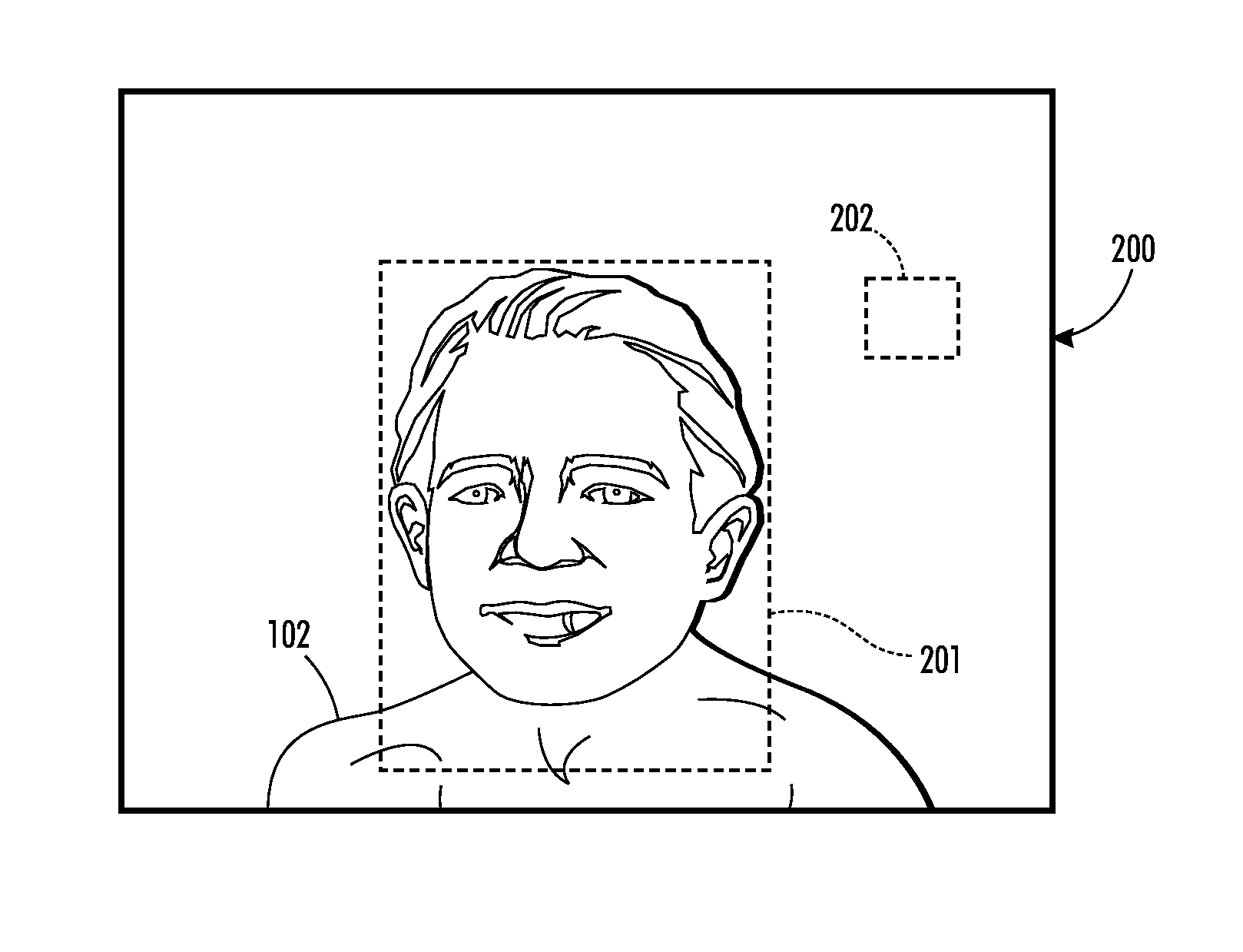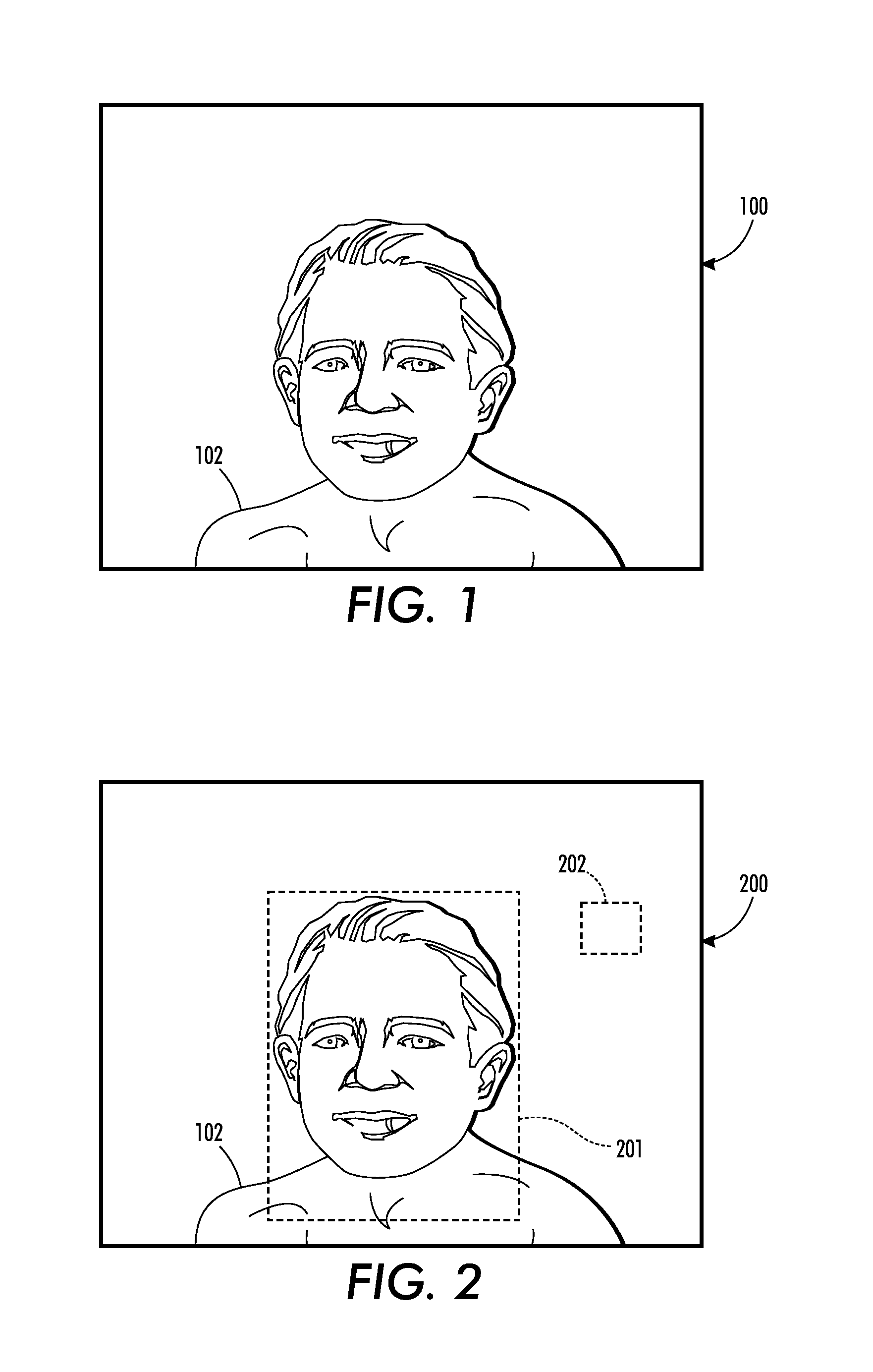Removing environment factors from signals generated from video images captured for biomedical measurements
a technology of biomedical measurements and environment factors, applied in image enhancement, television systems, instruments, etc., to achieve the effect of improving accuracy and reliability of biomedical measurements
- Summary
- Abstract
- Description
- Claims
- Application Information
AI Technical Summary
Benefits of technology
Problems solved by technology
Method used
Image
Examples
example signal processing
[0041]Reference is now being made to FIG. 4 which is a block diagram of an example networked video image processing system wherein various aspects of the present method as described with respect to the flow diagram of FIG. 3 are implemented.
[0042]In FIG. 4, imaging sensor 402 acquires source video images of a subject of interest in the sensor's field of view 403 over at least one imaging channel. The source video images are communicated to Video Image Processing System 404 wherein various aspects of the present method are performed. The example image processing system is shown comprising a Buffer 406 for buffering frames of the source video image for processing. Buffer 406 may further store data, formulas and other mathematical representations as are necessary to process the source video images in accordance with the teachings hereof. Image Stabilizer Module 408 is provided to process the images to compensate for motion induced blur, imaging blur, slow illuminant variation, an...
PUM
 Login to View More
Login to View More Abstract
Description
Claims
Application Information
 Login to View More
Login to View More - R&D
- Intellectual Property
- Life Sciences
- Materials
- Tech Scout
- Unparalleled Data Quality
- Higher Quality Content
- 60% Fewer Hallucinations
Browse by: Latest US Patents, China's latest patents, Technical Efficacy Thesaurus, Application Domain, Technology Topic, Popular Technical Reports.
© 2025 PatSnap. All rights reserved.Legal|Privacy policy|Modern Slavery Act Transparency Statement|Sitemap|About US| Contact US: help@patsnap.com



